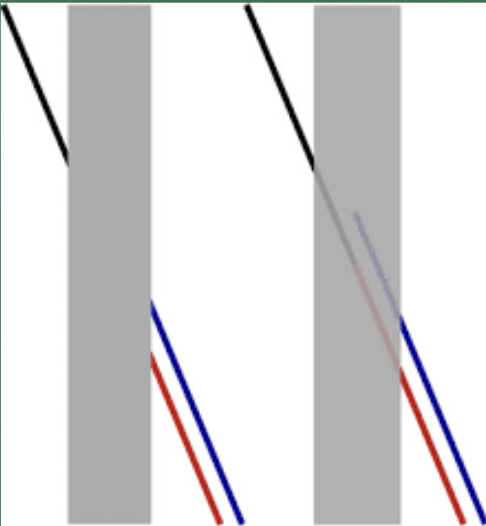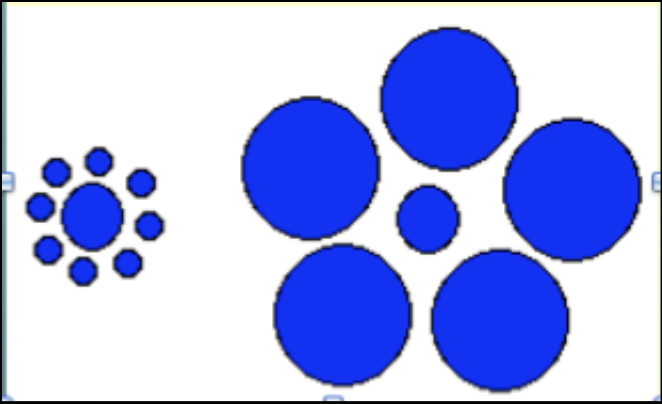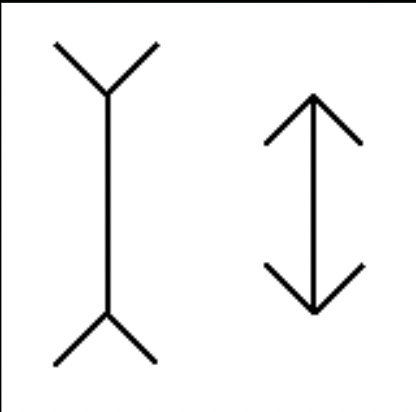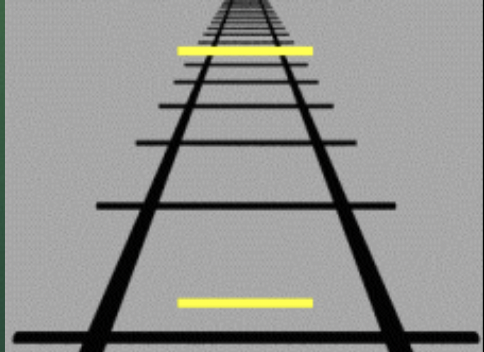Psych Unit 5
1/114
There's no tags or description
Looks like no tags are added yet.
Name | Mastery | Learn | Test | Matching | Spaced |
|---|
No study sessions yet.
115 Terms
Sensation
The detection of environmental stimuli, such as sounds, objects and smells (Data coming in)
Perception
The experience of detecting those environmental stimuli—it refers to how our brains organize and interpret sounds, objects and smells (How we make sense of the data)
Bottom-up processing
Sensory receptors relay information to the brain. The brain interprets this information
Top-down processing
Previous experience and expectations affect the detection and analysis of information from the senses. Explains visual illusions
Energy senses
Vision - light
Hearing - sound waves
Touch - pressure
Chemical senses
Taste and Smell
Gustation
taste
Olfaction
smell
Vestibular
balance; sensing the orientation of your head/body in space
Kinesthetic Sense
Position and movement of the parts of your body in relation to each other
Sensory adaptation
Diminishing sensitivity to an unchanging stimulus
Psychophysics
Methods that measure the strength of a stimulus and the observer’s sensitivity to the stimulusAbsolute Threshold
Absolute Threshold
Minimum stimulus necessary to detect a stimulus half of the time (going from nothing to something)
Just Noticeable Difference (JND)
Minimal change in a stimulus that can just barely be detected (going from something to something)
Weber’s Law
For a difference to be perceptible, two stimuli must differ by a constant proportion, rather than amount
visual brightness
k=1/62
auditory loudness
k=1/11
weight
k=1/30
Transduction
Transform light energy into neural signals (vision)
Wavelength
distance from one peak to the other
Amplitude
height of the wave
Hue
the color experienced
Intensity
determined by the wave’s amplitude
Rods
Function in dim light. Detect black and white vision, but not colors. Necessary for peripheral and twilight vision
Cones
Near center of retina (fovea). Function in bright or day light. Detect fine detail. Enable color perception
Accommodation
The lens changes shape to focus near or far objects on the retina
Feature Detectors
Cells pass info areas in cortex. Areas recognize biologically relevant objects and specialize in response to a specific stimulus
Parallel Processing
Processes color movement, form, and depth simultaneously in different areas. Integrates dimensions of visual info interpreted in different areas of the brain
Trichromatic Theory
Three types of cones sensitive to different wavelengths of light.
Red light – sensitive to long wavelengths.
Green light – sensitive to medium wavelengths.
Blue light – sensitive to short wavelengths.
Colors other than red, green and blue stimulate a combination of cones
The Opponent-process Theory
Divided into 3 sets of color sensitive neurons: red-green, blue-yellow, and black-white. Each color opposes the other. Light waves excite one color pair – inhibit the opposing color
Shape Constancy
An object appears to change shape with the angle of our view.
Change blindness
failure to notice changes in the environment
Inattentional blindness
failure to see visible objects when attention is directed elsewhere
Perceptual Set
Create a “set” for interpreting stimuli that conforms to expectations/preconceptions, influenced by expectations and preconceptions
Subjective Contours
Perception of contours where none actually exist
Figure Ground
Perceiving figures that stand out from the surrounding background (ground)
Phi Phenomenon
The illusion of movement - presenting visual stimuli in rapid succession
Grouping (Gestalt)
Tendency to organize stimuli into coherent groups
Proximity (Gestalt)
Perceive objects as belonging together when they are close to one another
Similarity (Gestalt)
Tendency to group objects that have similar characteristics
Continuity (Gestalt)
Tendency to perceive stimuli as a unified form when they appear to be a continuous pattern
Closure (Gestalt)
Tendency to group disconnected pieces of information into a meaningful whole *subjective contours
depth perception
Ability to see the world in three dimensions and know how far away an object is – judging distance, “visual cliff”
binocular cues
visual information is taken in by two eyes that enable us a sense of depth perception
retinal disparity
The difference in the images of objects projected onto the retina is used by the brain as a cue to gauge the distance of the objects, nearby = greater
convergence
Turning the eyes inward to focus on a nearby object creates muscular tension that the brain uses as a cue for depth perception
monocular cues
all the ways that a single eye helps you see and process what you're looking at
interposition
Objects that are obscured by other objects are perceived as being farther away
Relative Clarity
Nearby objects are clearer than more distant objects
texture gradient
The details of nearby objects appear to have a coarser/more detailed texture than those of distant objects
relative height
Near objects are low in visual field; more distant are higher up
linear perspective
Objects and the spaces between them look smaller as they become more distant. Parallel lines appear to converge as they recede into the distance.
shadowing
Shadows can create the appearance of curving surfaces or 3 dimensions, giving the impression of depth
poggendorf illusion


mueller-lyer illusion

ponzo illusions

Sound Waves
changes in air pressure that unfolds over time
decibels(dB)
Measurement unit for sound - volume
frequency
corresponds to our perception of pitch. Length of the sound wave; perceived as high and low sounds (pitch)
amplitude
corresponds to our perception of loudness. Height or intensity of sound wave; perceived as loud and soft (volume)
complexity
corresponds to our perception of timbre. Perceived as sound quality or resonance.
outer ear
Sound waves are collected
middle ear
Sound waves are amplified
inner ear
Sound waves are transduced into coded neural messages
pinna
Visible outer ear on either side of your head; helps pinpoint and locate sound
auditory canal
where sound travels to reach the eardrum
eardrum
Tightly stretched membrane that vibrates when hit by sound waves
cochlea
A coiled, bony, fluid-filled tube through which sound waves are transduced (basilar membrane) into nerve impulses
Semicircular canals
fluid filled channels that help maintain balance by orienting the brain.
Ossicles
Three tiny bones (hammer, anvil, stirrup) that pick up eardrum vibrations, amplify them, and pass them along to the cochlea in the inner ear
Place Theory
sound frequencies stimulate basilar membrane on specific hair cells (places) resulting in perceived pitch.
Frequency Theory
nerve impulses in auditory nerve matches the frequency of a tone, thus enabling us to sense its pitch.
Timing method
noting direction of sound by which ear is stimulated first (best with low frequency sounds)
Volume method
noting direction of sound by which ear is stimulated most vigorously (best with high frequency sounds)
Conductive Hearing Loss
Problem transferring sound waves anywhere along the route through the outer or middle ear. Help- Hearing aids.
Sensorineural Hearing Loss
Damage to inner ear (cochlea, hair cells). Can be by excessive loud sounds, earbuds, concerts Help- implant
Sweet
energy source
sour
potentially toxic acid
umami
(savoriness) proteins to grow and repair tissue
bitter
potential poisons
salty
sodium essential to physiological processes
touch
pressure, warmth, cold, and pain
Visual Agnosia
“mind blindness” -- mind is “blind” to what the senses tell it
prosopagnosia
inability to recognize familiar faces (even one’s own)
agnosia
without knowing
Auditory Agnosia
inability to recognize certain sounds despite unimpaired hearing
Synesthesia
“joined perception.” one sense is simultaneously perceived as if by one or more additional senses
bipolar cells
one of the main retinal interneurons and provide the main pathways from photoreceptors to ganglion cells, i.e. the shortest and most direct pathways between the input and output of visual signals in the retina.
blind spot
point at which the optic nerve leaves the eye, creating a blind spot because no receptor cells are located.
cornea
eyes clear, protective outer layer, covering the pupil and iris.
pupil
the adjustable opening in the center of the eye through which light enters.
iris
a ring of muscle tissue that forms the colored portion of the eye around the pupil and controls the size of the pupil opening.
lens
transparent structure behind the pupil that changes shape to help focus images on the retina.
retina
the light sensitive inner surface of the eye, containing the receptor rods and cones plus layers of neurons that begin the processing of visual information.
optic nerve
the nerve that carries neural impulses from the eye to the brain.
fovea
the central focal point in the retina, around which the eye’s cones cluster.
gate-control theory
the theory that the spinal cord contains a neurological “gate” that blocks pain signals or allows them to pass on to the brain. The “gate” is opened by the activity of pain signals traveling up small nerve fibers and is closed by activity in larger fibers or by information coming from the brain.
pitch
a tone’s experienced highness or lowness; depends on frequency.
signal detection theory
a theory predicting how and when we detect the presence of a faint stimulus(signal) amid background stimulation(noise). Assumes there is no single absolute threshold and that detection depends partly on a person’s experience, expectations, motivation, and alertness.
subliminal threshold
the level at which the participant is not aware of the stimulus being presented